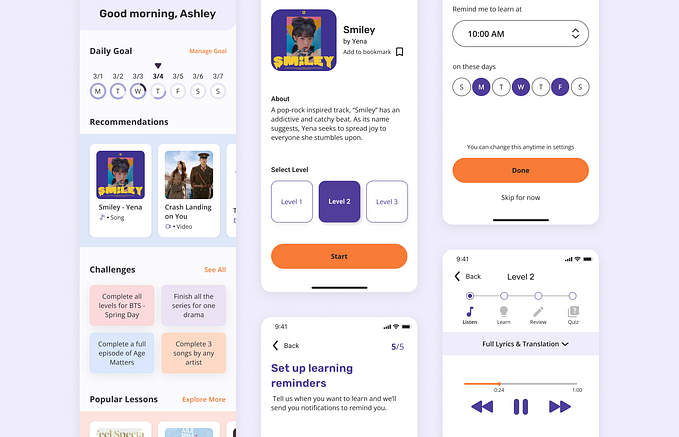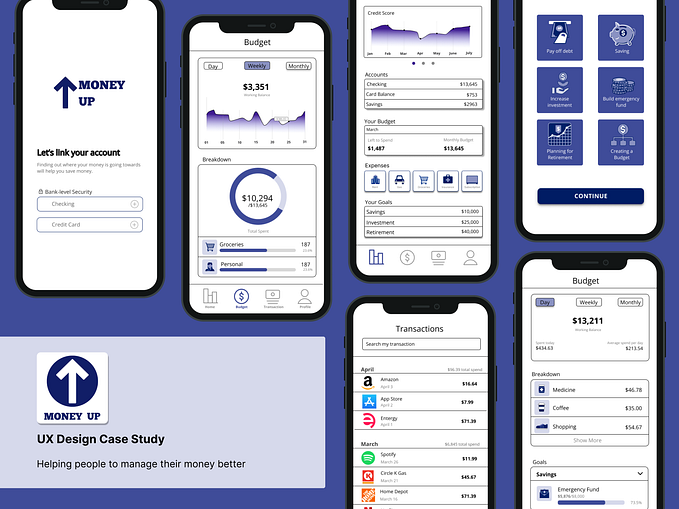Grocety App: Case Study Of The Online Grocery Shopping
Grocety is an online grocery shopping app, offering consumers a reliable alternative to the crowded supermarket’s experience in Egypt.

The Challenge
Create an interactive mobile application prototype that can make the grocery experience easier.
Wouldn’t it be fantastic to choose what I want to cook for dinner, then to find the missing ingredients on my door step within an hour?
People Interviewing
Before conducting interviews, I listed out potential questions that may be asked during the sessions.
These questions were centered on the following topics:
Online Shopping / Food & Grocery Delivery / Cooking Behavior.
Example of the questions I were asking:
- Have you ordered groceries online before?
- Do you face any problems with food/grocery delivery, while ordering from online?
- How often do usually you cook from a recipe?
- What is the main challenge that you face when cooking from a recipe?
- Do you have a grocery-list that you buy every month?
The interviews went very well, and the five interviewees were active and cooperative, as each and every session helped me to narrow down the topics and its questions.
Affinity Mapping
After the interviews, I noted down the user preferences and problems collected from my interviewees onto post-it notes, then I grouped these notes in an affinity map, that helped me to identify recurring issues and themes.

User Personas
From the insights obtained from the affinity map, I was able to create two personas, also the user flow which required me to update the sitemap.
The two personas are:
- Noha is a stay-at-home mum, she cooks for her family every day, she prefers economical and healthy food, she sometimes tries new recipes from the internet, she has grocery-lists that wants to buy periodically, she usually shops on monthly basis from the central supermarkets, although she sees this monthly experience exhausting.
- Ayman is a single-man, he spends most of his time working, he likes exploring new tastes and cuisines, he sometimes cooks for his friends on weekends, he usually shops at the neighborhood supermarket, he prefers to select his own fresh food.

Problem Statement
Defining the needs and pain points.
While most users prefer to shop at a supermarket, rather than with a groceries app, often, they find that they are unable to get the right ingredients for recipes at their neighborhood groceries store, and the central supermarket is an exhausting experience.
Solution Statement
Solving the problem with a digital solution.
By integrating recipes with the current “Grocety” mobile app, users can find new recipes from different cuisines, with the option to place an order for the recipe ingredients, then follow step-by-step instructions to cook their own meals.
User Flow Chart
Before creating a prototype, I set out to illustrate a user flow in a chart. This helps me to understand how a user interacts with the app to perform tasks he wants to complete.

Low-Fidelity Prototype
I sketched out a wireframe of the app using “Balsamiq Mockups” to use it for user testing, in order to collect feedback about the user flow.

High-Fidelity Prototype
After conducting user testing with a low-fidelity prototype, my colleague iterated the changes on a high-fidelity prototype.

The Conclusion
No matter how many apps exist, there is a way to make yours stand out from the crowd. Innovative features, sufficient user experience, and pleasant UI design can be an effective foundation for a mobile application.
The Take-Away
This challenge was only a prototype for the MVP concept. However, the design process was an exciting creative challenge for me. It was a cool attempt to broaden the horizons of grocery delivery applications with extended functionality, strong usability, and intuitive appearance.
Thank you for reading, and looking forward to your feedback. Also waiting for the 50 claps ;)
And a special thanks to my great design-mate Mohamed Sherif for his support.












